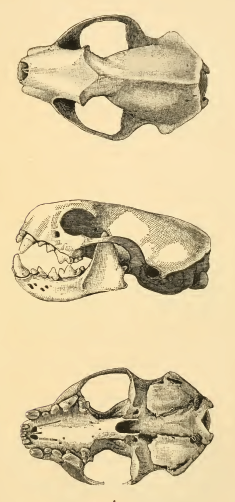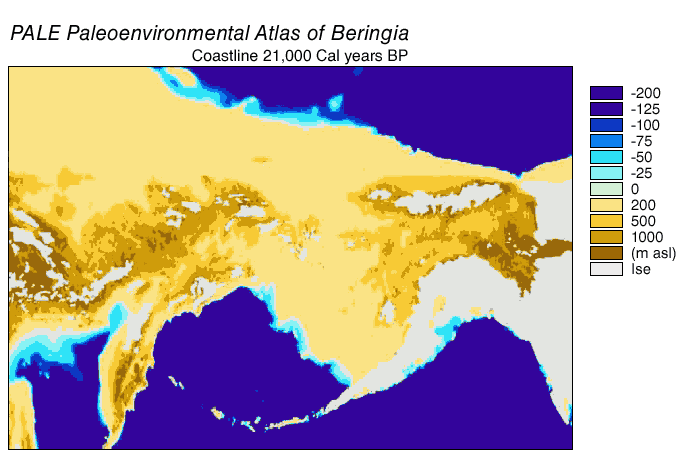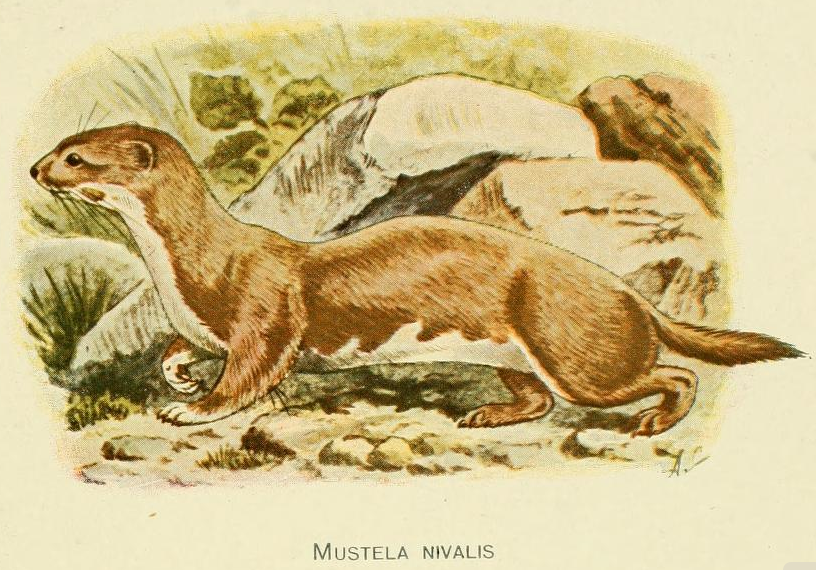|
Mustela Nigripes
The black-footed ferret (''Mustela nigripes''), also known as the American polecatHeptner, V. G. (Vladimir Georgievich); Nasimovich, A. A; Bannikov, Andrei Grigorovich; Hoffmann, Robert S. (2001)''Mammals of the Soviet Union''Volume: v. 2, pt. 1b. Washington, D.C. : Smithsonian Institution Libraries and National Science Foundation. or prairie dog hunter, is a species of mustelid native to central North America. The black-footed ferret is roughly the size of a mink and is similar in appearance to the European polecat and the Asian steppe polecat. It is largely nocturnal and solitary, except when breeding or raising litters. Up to 90% of its diet is composed of prairie dogs. The species declined throughout the 20th century, primarily as a result of decreases in prairie dog populations and sylvatic plague. It was declared extinct in 1979, but a residual wild population was discovered in Meeteetse, Wyoming in 1981. A captive-breeding program launched by the United States Fish and ... [...More Info...] [...Related Items...] OR: [Wikipedia] [Google] [Baidu] |
John James Audubon
John James Audubon (born Jean-Jacques Rabin, April 26, 1785 – January 27, 1851) was a French-American Autodidacticism, self-trained artist, natural history, naturalist, and ornithology, ornithologist. His combined interests in art and ornithology turned into a plan to make a complete pictorial record of all the bird species of North America. He was notable for his extensive studies documenting all types of American birds and for his detailed illustrations, which depicted the birds in their natural habitats. His major work, a color-plate book titled ''The Birds of America'' (1827–1839), is considered one of the finest ornithological works ever completed. Audubon is also known for identifying 25 new species. He is the eponym of the National Audubon Society, and his name adorns a large number of towns, neighborhoods, and streets across the United States. Dozens of scientific names first published by Audubon are still in use by the scientific community. Audubon was accused during ... [...More Info...] [...Related Items...] OR: [Wikipedia] [Google] [Baidu] |
Beringia
Beringia is defined today as the land and maritime area bounded on the west by the Lena River in Russia; on the east by the Mackenzie River in Canada; on the north by 70th parallel north, 72° north latitude in the Chukchi Sea; and on the south by the tip of the Kamchatka Peninsula. It includes the Chukchi Sea, the Bering Sea, the Bering Strait, the Chukchi Peninsula, Chukchi and Kamchatka peninsulas in Russia as well as Alaska in the United States and Yukon in Canada. The area includes land lying on the North American Plate and Siberian land east of the Chersky Range. At various times, it formed a land bridge referred to as the Bering land bridge, that was up to wide at its greatest extent and which covered an area as large as British Columbia and Alberta together, totaling about , allowing biological dispersal to occur between Asia and North America. Today, the only land that is visible from the central part of the Bering land bridge are the Diomede Islands, the Pribilof Isla ... [...More Info...] [...Related Items...] OR: [Wikipedia] [Google] [Baidu] |
Least Weasel
The least weasel (''Mustela nivalis''), little weasel, common weasel, or simply weasel is the smallest member of the genus ''Mustela,'' Family (biology), family Mustelidae and Order (biology), order Carnivora. It is native to Eurasia, North America and North Africa, and has been introduced to New Zealand, Malta, Crete, the Azores, and São Tomé Island, São Tomé. It is classified as least concern by the IUCN, due to its wide distribution and large population throughout the Northern Hemisphere. The least weasel varies greatly in size over its range. The body is slender and elongated, and the legs and tail are relatively short. The colour varies geographically, as does the pelage type and length of tail. The dorsal surface, flanks, limbs and tail of the animal are usually some shade of brown while the underparts are white. The line delineating the boundary between the two colours is usually straight. At high altitudes and in the northern part of its range, the coat becomes pure ... [...More Info...] [...Related Items...] OR: [Wikipedia] [Google] [Baidu] |
Subgenus
In biology, a subgenus ( subgenera) is a taxonomic rank directly below genus. In the International Code of Zoological Nomenclature, a subgeneric name can be used independently or included in a species name, in parentheses, placed between the generic name and the specific epithet: e.g. the tiger cowry of the Indo-Pacific, ''Cypraea'' (''Cypraea'') ''tigris'' Linnaeus, which belongs to the subgenus ''Cypraea'' of the genus ''Cypraea''. However, it is not mandatory, or even customary, when giving the name of a species, to include the subgeneric name. In the International Code of Nomenclature for algae, fungi, and plants The ''International Code of Nomenclature for algae, fungi, and plants'' (ICN or ICNafp) is the set of rules and recommendations dealing with the formal botanical names that are given to plants, fungi and a few other groups of organisms, all tho ... (ICNafp), the subgenus is one of the possible subdivisions of a genus. There is no limit to the number of divisio ... [...More Info...] [...Related Items...] OR: [Wikipedia] [Google] [Baidu] |
Whisker
Whiskers, also known as vibrissae (; vibrissa; ) are a type of stiff, functional hair used by most therian mammals to sense their environment. These hairs are finely specialised for this purpose, whereas other types of hair are coarser as tactile sensors. Although whiskers are specifically those found around the face, vibrissae are known to grow in clusters at various places around the body. Most mammals have them, including all non-human primates and especially nocturnal mammals. Monotremes, however, lack them. Whiskers are sensitive tactile hairs that aid navigation, locomotion, exploration, hunting, social touch and perform other functions. This article is primarily about the specialised sensing hairs of mammals, but some birds, fish, insects, crustaceans and other arthropods are known to have similar structures also used to sense the environment. Etymology Vibrissae (from Latin 'to vibrate') from the characteristic motion seen in a small rodent that is otherwise sit ... [...More Info...] [...Related Items...] OR: [Wikipedia] [Google] [Baidu] |
Pleistocene
The Pleistocene ( ; referred to colloquially as the ''ice age, Ice Age'') is the geological epoch (geology), epoch that lasted from to 11,700 years ago, spanning the Earth's most recent period of repeated glaciations. Before a change was finally confirmed in 2009 by the International Union of Geological Sciences, the cutoff of the Pleistocene and the preceding Pliocene was regarded as being 1.806 million years Before Present (BP). Publications from earlier years may use either definition of the period. The end of the Pleistocene corresponds with the end of the last glacial period and also with the end of the Paleolithic age used in archaeology. The name is a combination of Ancient Greek () 'most' and (; Latinized as ) 'new'. The aridification and cooling trends of the preceding Neogene were continued in the Pleistocene. The climate was strongly variable depending on the glacial cycle, oscillating between cold Glacial period, glacial periods and warmer Interglacial, int ... [...More Info...] [...Related Items...] OR: [Wikipedia] [Google] [Baidu] |
Alaska
Alaska ( ) is a non-contiguous U.S. state on the northwest extremity of North America. Part of the Western United States region, it is one of the two non-contiguous U.S. states, alongside Hawaii. Alaska is also considered to be the northernmost, westernmost, and easternmost (the Aleutian Islands cross the 180th meridian into the eastern hemisphere) state in the United States. It borders the Canadian territory of Yukon and the province of British Columbia to the east. It shares a western maritime border, in the Bering Strait, with Russia's Chukotka Autonomous Okrug. The Chukchi and Beaufort Seas of the Arctic Ocean lie to the north, and the Pacific Ocean lies to the south. Technically, it is a semi-exclave of the U.S., and is the largest exclave in the world. Alaska is the largest U.S. state by area, comprising more total area than the following three largest states of Texas, California, and Montana combined, and is the seventh-largest subnational division i ... [...More Info...] [...Related Items...] OR: [Wikipedia] [Google] [Baidu] |
Medicine Hat
Medicine Hat is a city in Southern Alberta, southeast Alberta, Canada. It is located along the South Saskatchewan River. It is approximately east of Lethbridge and southeast of Calgary. This city and the adjacent Town of Redcliff, Alberta, Redcliff to the northwest are within Cypress County. Medicine Hat was the List of cities in Alberta, eighth-largest city in Alberta in 2021 with a population of 63,271. It is also the sunniest place in Canada according to Environment and Climate Change Canada, averaging 2,544 hours of sunshine a year. Started as a railway town, today Medicine Hat is served by the Trans-Canada Highway (Alberta Highway 1, Highway 1) and the eastern terminus of the Crowsnest Highway (Alberta Highway 3, Highway 3). Nearby communities considered part of the Medicine Hat area include the Town of Redcliff (abutting the city's northwest boundary) and the hamlets of Desert Blume, Dunmore, Alberta, Dunmore, Irvine, Alberta, Irvine, Seven Persons, and Veinervil ... [...More Info...] [...Related Items...] OR: [Wikipedia] [Google] [Baidu] |
Sangamonian
The Sangamonian Stage (or Sangamon interglacial) is the term used in North America to designate the Last Interglacial (130,000-115,000 years ago) and depending on definition, part of the early Last Glacial Period, corresponding to Marine Isotope Stage 5 (~130-80,000 years ago). While often historically considered equivalent in scope to MIS 5, it is now often used in a more narrow sense to refer to the Last Interglacial only (corresponding to MIS 5e and the European Eemian). It preceded the Wisconsin glaciation, Wisconsinan (Wisconsin) Stage and followed the Illinoian (stage), Illinoian Stage in North America. Definition The Sangamonian Stage, originally the Sangamon interglacial stage, is defined on the basis of the Sangamon Soil, a paleosol, which is developed in contemporaneous colluvium and older glacial tills and loess, loesses and overlain by Wisconsinan loesses or tills. Although originally described from water wells in northwestern Sangamon County, Illinois, the current type ... [...More Info...] [...Related Items...] OR: [Wikipedia] [Google] [Baidu] |
Clay County, Nebraska
Clay County is a county in the U.S. state of Nebraska. As of the 2020 United States census, the population was 6,104. Its county seat is Clay Center. The county was formed in 1855, and was organized in 1871. It was named for Henry Clay, a member of the United States Senate from Kentucky, who went on to become United States Secretary of State. In the Nebraska license plate system, Clay County is represented by the prefix 30 (it had the 30th-largest number of vehicles registered in the county when the license plate system was established in 1922). Geography According to the US Census Bureau, the county has an area of , of which is land and (0.2%) is water. Major highways * U.S. Highway 6 * Nebraska Highway 14 * Nebraska Highway 41 * Nebraska Highway 74 Adjacent counties * York County – northeast * Fillmore County – east * Thayer County – southeast * Nuckolls County – south * Webster County – southwest * Adams County – west * Hamilton County – ... [...More Info...] [...Related Items...] OR: [Wikipedia] [Google] [Baidu] |








